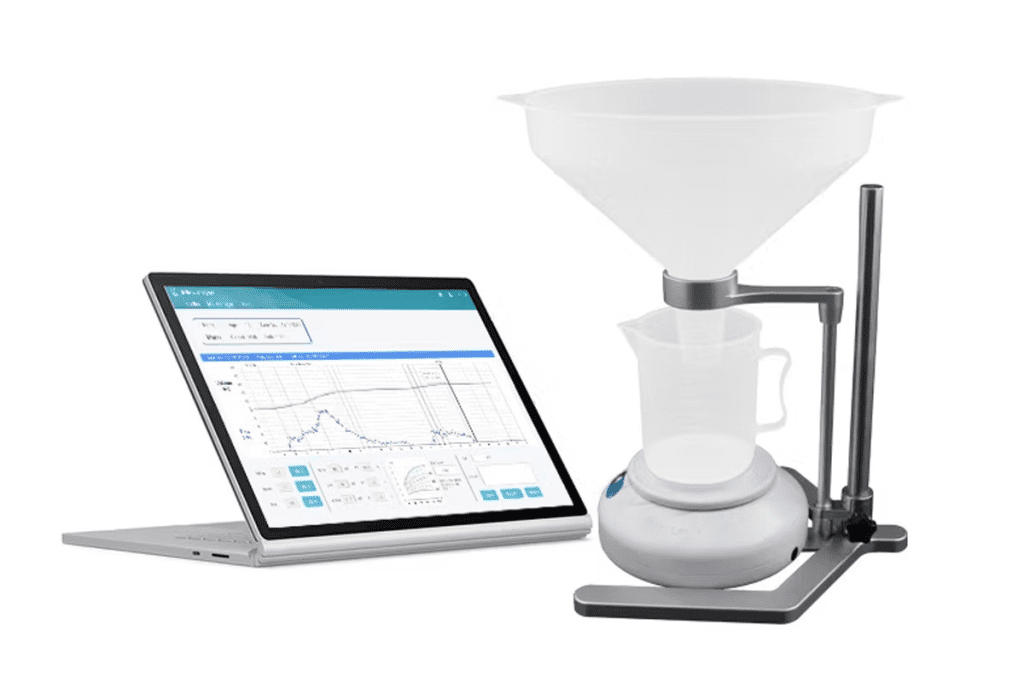Last Updated on November 25, 2025 by
Getting ready for a uroflowmetry test is key to good results. This test checks how urine flows and helps find problems in the lower urinary tract. It’s used for both men and women.

Before the test, drink lots of water to fill your bladder. You should drink 750-1000 mL of water in 1-2 hours. This makes sure your bladder is full enough for the test.
Knowing what to do before the test can make you feel better. It also helps make sure the test results are right. Preparing well for a uroflowmetry test is important for finding and fixing urinary issues.
Uroflowmetry is a tool used by doctors to check for urinary problems. It’s a simple test that looks at how urine flows. This helps doctors understand how well the urinary system is working.

The uroflow test checks how fast and how much urine flows. It helps find and track problems in the lower urinary tract. It’s great for spotting issues like weak urine flow or trouble starting to pee.
Uroflowmetry helps find and track many urinary issues. These include BPH, blockages, and neurogenic bladder. These problems can really affect a person’s life. Uroflowmetry makes it easy to see how serious they are.
The uroflow test is easy on patients because it’s non-invasive. It gives quick results, helping doctors act fast. It’s also good for checking if treatments are working over time.
To make your uroflowmetry test go smoothly, follow these key steps. These steps help you feel at ease and ensure the test’s results are accurate.
Drinking enough water is very important. You should drink 750-1000 mL of water 1-2 hours before the test. Drinking this much water helps your bladder feel full, which is key for good results.

When you drink water, it matters too. Try to drink the water 1-2 hours before your test. This helps your bladder fill up properly and keeps you comfortable during the test.
Having enough in your bladder is vital for the test. You need at least 150 mL in your bladder. Following the hydration tips can help you meet this requirement.
Wear clothes that are easy to take off. Loose clothes can make you feel less stressed and follow the doctor’s instructions better.
By following these 5 steps, you can make sure your uroflow test goes well. As a healthcare expert said, “Getting ready right is essential for a good test.”
“A well-prepared patient is more likely to have a successful test and obtain accurate results.” “ A Urologist
To get the most out of your uroflowmetry test, it’s key to follow certain dietary and medication guidelines. Some substances and medications can change how your bladder works and how urine flows. This can affect the test’s accuracy.
It’s wise to avoid certain substances before your uroflowmetry test. Caffeine and alcohol can both impact urine flow. Caffeine makes you pee more, and alcohol can mess with your bladder’s muscle tone. Also, diuretics should be avoided as they can change the test results by making you pee more.
Some medications can change how your bladder works. This can affect your uroflowmetry test results. These include drugs that relax or stimulate the bladder muscle, and those that affect the nervous system’s control over the bladder. It’s important to know how your medications might impact the test.
Telling your healthcare provider about all your medications is vital before the test. This includes prescription drugs, over-the-counter medicines, and supplements. Your healthcare provider will check how these might affect your test results. They’ll also tell you if you should keep taking them before the test.
By following these guidelines, you can make sure your uroflowmetry test results are accurate. This will give a clear view of your urinary health.
The uroflowmetry procedure is a simple, non-invasive test. It measures the flow and volume of your urine. This test is key for diagnosing and monitoring urinary tract issues.
The test involves urinating into a special toilet. This toilet measures the volume and flow of urine. You will be taken to a private room where you can urinate as you normally would.
The uroflowmetry test usually takes under 10 minutes. It’s a quick and efficient way to diagnose issues.
The testing environment is designed to be private and comfortable. It’s made to help you relax during the test.
The position you adopt while urinating can affect the test results. Your healthcare provider may advise on the best position. This ensures accurate measurements.
Understanding the uroflowmetry procedure can help alleviate any concerns. It makes the experience less stressful.
Getting the most out of your uroflowmetry results is important. This test looks at different things to help figure out and keep track of urinary problems.
Qmax changes with age and sex. For men, it’s over 15 mL/s. Women usually have a Qmax between 20 and 36 mL/s. Knowing these numbers helps check if your urine flow is normal.
Other key things measured are the amount of urine you void and how it flows. These details give a full picture of how well you’re urinating.
Things like straining to pee, constipation, and some medicines can mess with your test results. Talking about these with your doctor is very important.
If your test shows something off, you might need more tests to find out why. Your doctor will tell you what to do next based on your results.
Knowing what your uroflow test results mean helps you make better choices for your urinary health. Always talk to your doctor to understand your results fully.
Getting ready for uroflowmetry testing is very important. It helps get accurate results. Patients can make sure the test goes well by following some steps.
It’s key to follow the guidelines for preparing. This includes drinking enough water and avoiding certain foods. These steps help get reliable test results. This is important for doctors to diagnose and track urinary problems well.
Patients should think about how their actions might affect the test. This includes some medicines and foods. Working with their doctor can help get the best results. This careful preparation helps in diagnosing and treating urinary issues better.
Uroflowmetry is a test that checks how urine flows. It helps find problems in the lower urinary tract in both men and women.
Drink 750-1000 mL of water 1-2 hours before. Wear comfy clothes. Don’t have caffeine, alcohol, or diuretics.
Stay away from caffeine, alcohol, and diuretics. They can mess with urine flow. Also, tell your doctor about all your meds.
It’s quick, under 10 minutes. You’ll pee into a special toilet that tracks your urine flow.
You’ll go to a private room. There, you pee into a toilet that measures urine flow and volume.
The test looks at things like how fast you pee (Qmax), how much you pee, and the flow pattern. These help figure out and track urinary issues.
Straining, constipation, and some meds can mess with the test’s accuracy.
Normal Qmax changes with age and sex. Your doctor will look at your results to see if they’re okay.
If your results show problems, you might need more tests. This helps find what’s causing your symptoms.
Subscribe to our e-newsletter to stay informed about the latest innovations in the world of health and exclusive offers!